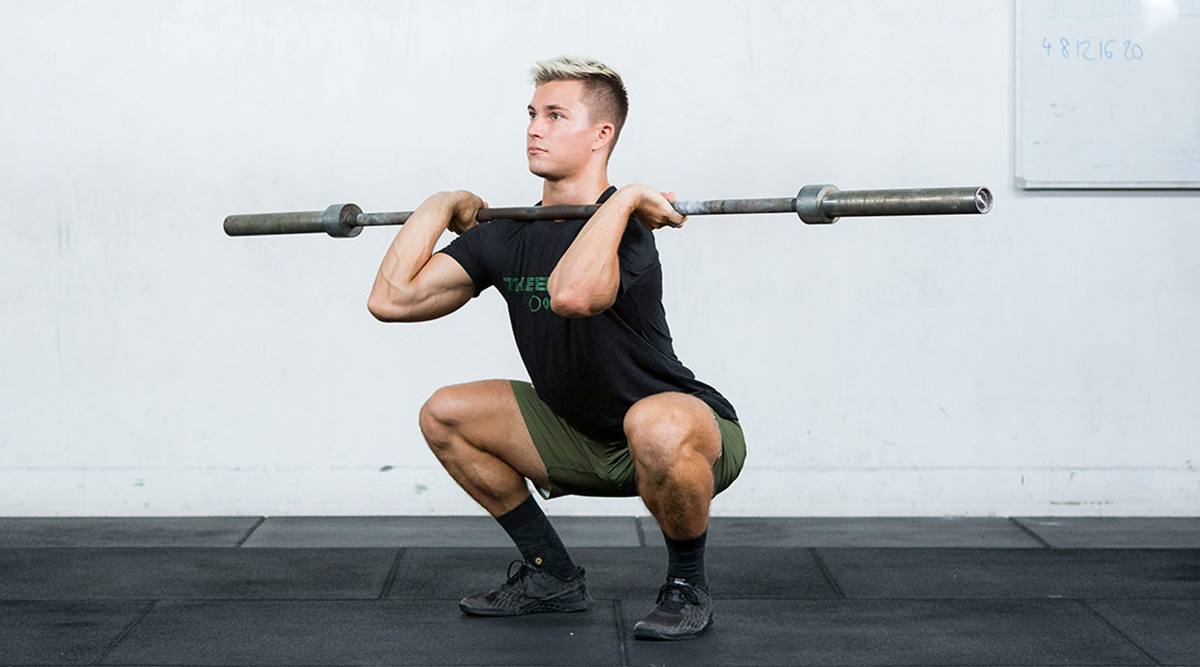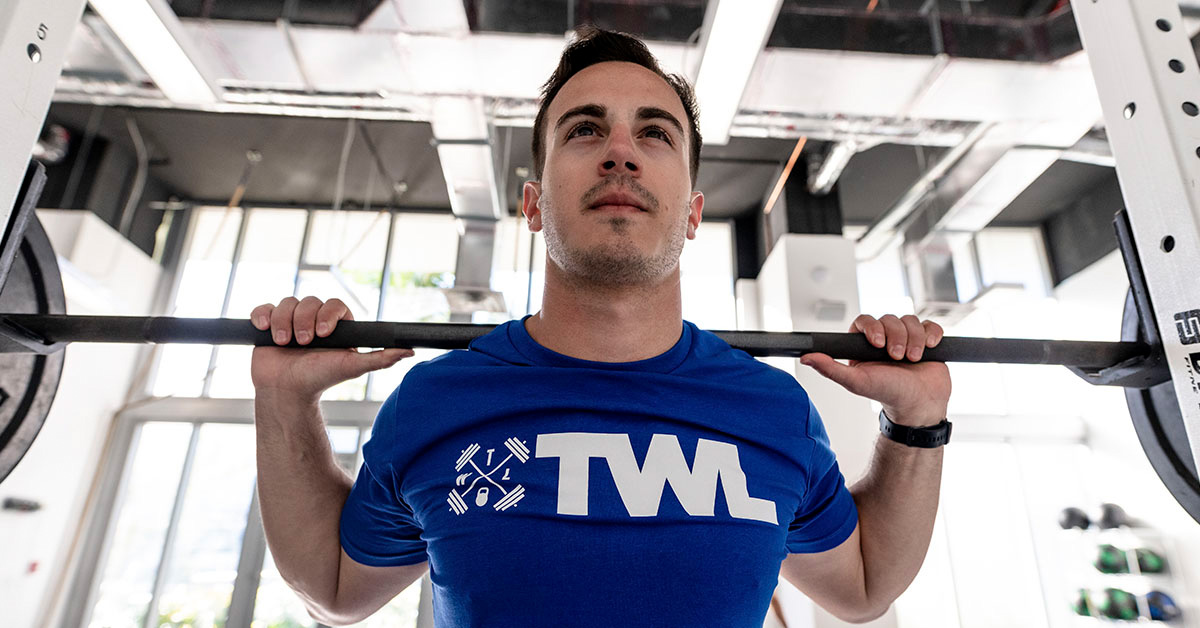Let’s talk about squat mechanics. Second only to putting one foot in front of the other (that is, walking), the squat is one of our most fundamental primal movements. Sitting and standing in a chair, in the bathroom, or in your car (bus, train, tram, or whatever), and picking something up off the floor are all day-to-day activities that call on squat mobility, yet so many of us struggle with it. That’s not even adding load, which for an athlete can bring a whole other world of trouble.
The godfather of mobility, Dr. Kelly Starrett, said that the squat is “an omnipotent diagnostic tool for identifying problems and fixing the broken athlete” (see: Becoming a Supple Leopard), so let us take a look at the key common signs that your squat mobility needs work.
5 Signs Your Squat Mobility Needs Work
1. My Heels Are Lifting at the Bottom of My Squat
What it means: When you get down low, your toes are the only thing connecting you and that heavy barbell to the ground. Your heels are floating in mid-air and probably came up somewhere around your hips passing your knees.
It means that you are tight, but not like the good tight where you and your training buddy always go for brunch after a bro sesh. We mean those sore calves, hammies, and hip flexors are not moving how they are supposed to and probably need a bit of TLC.
How can I fix it? Start by foam rolling your posterior chain as often as you can. A bit of yoga, scheduled stretching at home, and all the standard tricks can help improve your flexibility. From there, the good ol’ 1.25s under your heels is always a good option. If that’s not an option, a new pair of lifters might be on the cards to help create the angle you need to support your reduced range of motion (ROM), inflexibility, or tightness.
2. My Knees Cave In
What it means: Rather than tracking your knees out toward your pinky toes, they collapse inward, giving you a weak and unstable squat position. It’s probably pretty uncomfortable, too.
How can I fix it? You’re going back to basics on this one. Drop the weight and spread ‘em. Go wider with your stance until you find a comfortable position where your knees do not fall inward. Don’t even worry about adding any load until you have got these basic mechanics right.
Invest in a pack of resistance bands and keep one at home, one at work, and one in your gym bag, because you’ll want to use them at every opportunity to start strengthening those glute min muscles and teaching them to track outward.
Shop Now
3. I’m Leaning Forward (My Torso Won’t Stay Upright)
What it means: Shakira’s hips don’t lie and neither do yours. They are telling you that when you try and get down low, it’s a big “no” because they don’t want to move that way, buddy. So listen to them. You might also have some tightness in your lumbar, but it’s more likely that you’re losing your strong posture because it’s compensating for your tight hips.
How can I fix it? Starting from the top, it’s taking the previous two fixes and putting it all together. Back straight and tall, chest proud, knees tracking out to toes, and start by going to the end of your ROM before your posture is compromised. And definitely ditch the weight here, too. That’s just asking for an injury.
Separate to the squat, start working some hip-specific strength and mobility into your training. (See: 5 Best Exercises to Strengthen Your Hip Flexors.)
4. My Butt Goes Up Before My Legs
What it means: Chances are you’re not engaging the right muscles at the right time and compensating by sending your butt high to use as leverage. As covered in the previous point, if your torso is coming so far forward that it’s parallel with the ground, there is really nowhere else for your butt to go but to the sky; those are just the facts of mechanics.
How can I fix it? Focus on putting your weight more in your heels. Really drive the power from your whole foot through your posterior chain, keeping your torso upright, rather than allowing yourself to lean forward.
View this post on Instagram
5. Someone Told Me I’ve Got a “Butt Wink”
What it means: “Butt wink” is a term you will hear thrown around in almost any gym environment, and it’s one of those things that when you know what it means, you will start to see it everywhere and probably giggle at the appropriateness of its phrasing. A “butt wink” occurs at the bottom of a squat when your tailbone tucks under (your butt winks) as you reach the end of your ROM or perhaps go a little past your ROM (and that is what’s causing it).
To be clear, a minor butt wink is typically okay. It starts to be concerning when your body is rounding out too much.
How can I fix it? Unfortunately, even the boffins cannot pinpoint the cause of the wink, but there are notions that it could be a sign of tight hips and/or calves. However, the best coaching cue I have received is to not go down quite so low. Get a buddy to spot you (or use the mirror or film yourself) and take a look at the depth when you start winking. Work on finding the sweet spot right before that happens. Remember to keep sitting backward with your chest up tall at the bottom of your squat before engaging and tightening to come back up.
Now, it’s time to find a full-length mirror or get your phone out to start recording and closely analysing your squat mobility. You can even take it a step further with programs like ROMWOD, which will help you improve your mobility.
Don’t worry — you squat this!
Need help? Check out our squat program — gains are around the corner.

















